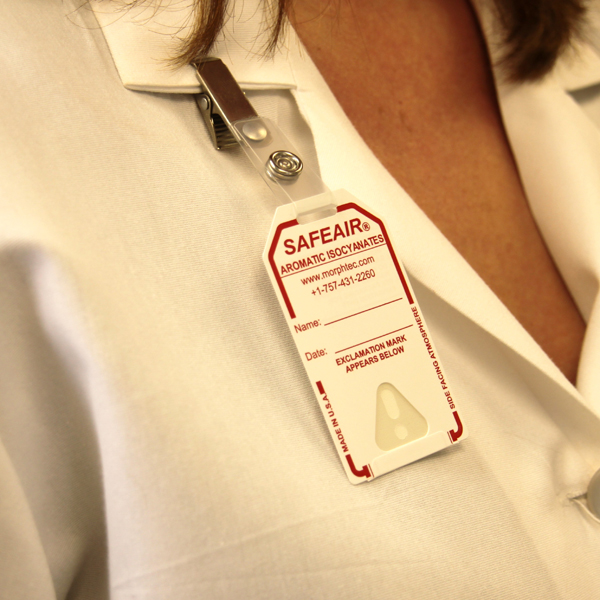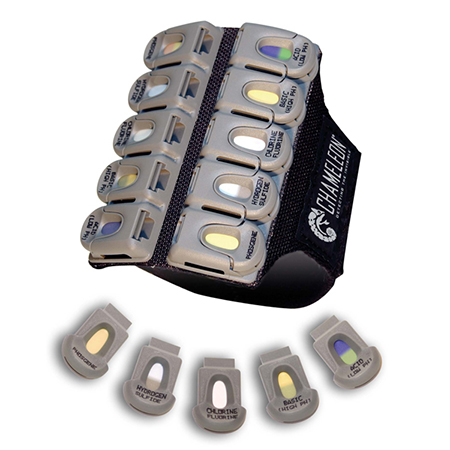Description
Description
The Formaldehyde Colorimetric ChromAir Badge is a patented direct-read autogenic exposimeter. The device is constructed from six cells attached on one side to a flat indicator layer and on the other side to a series of different diffusive resistances. Formaldehyde gas diffuses to the cells through the different diffusive resistances and reacts with the indicator layer, producing color change from yellowish-brown to brown. The color produced on the indicator layer is a direct measure of the exposure dose. Visual color is achieved by observing the formation of the brown threshold color on the individual cell and reading the corresponding exposure dose.
Formaldehyde is a colorless gas with a pungent, suffocating odor. It is a potent irritant to eyes, nose and throat. The most common effects of low level formaldehyde inhalation are eye, nose and upper respiratory irritation. Chronic symptoms of exposure are itching eyes, dry and sore throat, and possible difficulty in sleeping and unusual thirst after awakening. OSHA PEL (permissible exposure limit) for formaldehyde is 0.75 ppm (TWA). NIOSH REL (recommended exposure limit) is 0.016 ppm (TWA). NIOSH also recommends that formaldehyde be handled as a potential occupational carcinogen in the workplace. Formaldehyde workplace exposure occurs because of its extensive use as an industrial chemical in the manufacturing of resins for adhesives, plastics, coatings and fabrics. Additional exposure to formaldehyde emissions comes from its use as a fumigant and sterilant. The major source of atmospheric discharge of formaldehyde is from combustion processes, specifically from the photo-oxidation of hydrocarbons in auto emissions.




